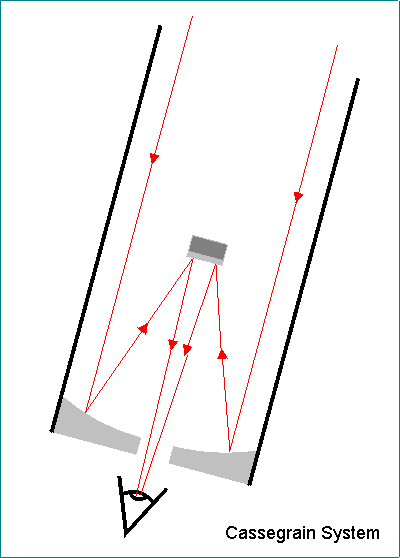Cassegrain telescope

A Cassegrain telescope is a type of reflecting telescope with a folded optical path achieved by two mirrors – a large concave paraboloidal primary with a central hole and a small hyperboloidal convex mirror mounted on the large front corrector plate. Light strikes the primary mirror, which reflects the image back to the smaller convex secondary mirror, which in turn reflects the magnified image through the center hole and on to the eyepiece. The design was conceived in about 1672 by the Frenchman Guillaume Cassegrain, about whom little is known.
In an alternate scheme, called a modified Cassegrain, a
small optical flat placed immediately in front of the primary brings the
light out to the side of the telescope tube and eliminates the need for
a perforated primary. Like the Gregorian and Newtonian telescopes, the paraboloid-hyperboloid combination of the Cassegrain is
free from spherical aberration.
The Dall-Kirkham telescope is a variant of the Cassegrain
that uses a concave ellipsoidal primary mirror and a convex spherical secondary.
Invented independently by the English amateur telescope-maker Horace Dall
(1901–1986) and the American Alan Kirkham, it is particularly suited
to planetary observation where good resolution is more important than wide field of view.


